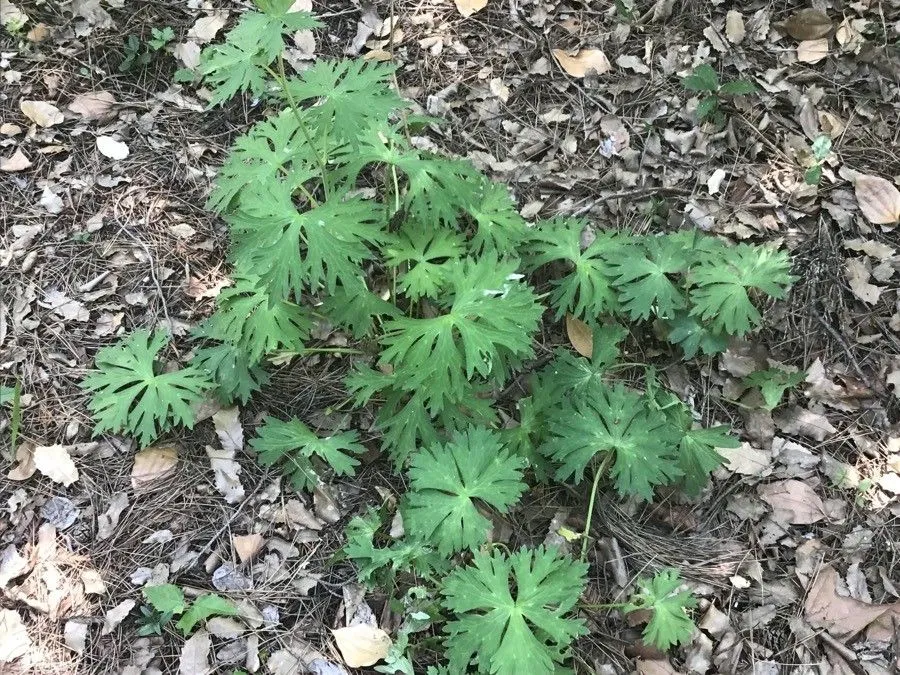
Author: Rchb.
Bibliography: Uebers. Aconitum: 70 (1819)
Year: 1819
Status: accepted
Rank: species
Genus: Aconitum
Vegetable: Unknown
Observations: W. & S. Europe
Wolfsbane, scientifically known as Aconitum vulparia, is a strikingly beautiful but highly toxic plant that belongs to the family Ranunculaceae. This perennial herb is native to Western and Southern Europe, where it has been both revered and feared due to its potent properties.
The plant is renowned for its tall spikes of hooded flowers, which are often a pale yellow or cream color. These distinctive blossoms make it a popular but cautious choice for ornamental gardening, where awareness of its toxic nature is paramount. Wolfsbane possesses deeply lobed leaves that add to its aesthetic appeal, and it typically blooms from mid to late summer, gracing gardens and wild landscapes during these warmer months.
Historically, Aconitum vulparia has been steeped in folklore and used in traditional medicine, though such uses have largely fallen out of favor due to modern understandings of its toxicity. All parts of Wolfsbane—particularly its roots and seeds—contain potent alkaloids that can cause severe poisoning if ingested, even in small quantities. Symptoms of exposure may include nausea, vomiting, diarrhea, and in severe cases, cardiac issues and respiratory distress.
The plant’s lethal reputation is reflected in its common name, Wolfsbane, which hints at its historical application in hunting and warfare. It was reputedly used as a poison for arrows and bait to kill wolves and other predators, underscoring the plant’s dangerous potency.
First scientifically described by Rchb. in 1819 in the “Uebers. Aconitum,” Aconitum vulparia has been a subject of considerable botanical interest. Botanists and horticulturists alike study Wolfsbane not only for its toxic characteristics but also for its complex alkaloid chemistry and its potential uses in pharmacology, albeit with significant cautions.
Despite its dangers, Wolfsbane occupies an intriguing niche in the botanical world. Its haunting beauty and menacing properties serve as a reminder of the fine line between nature’s wonder and its potential peril. Gardeners who choose to cultivate this plant must do so with utmost respect and care, ensuring it is kept away from children and pets to prevent accidental poisoning.
En: Wolfsbane, Wolf’s-bane
Nl: Gele monnikskap
Fr: Aconit tue-loup, Cape-de-moine, Coqueluchon jaune, Étrangle-loup, Herbe au loup
De: Wolfswurz-Eisenhut, Gelber Eisenhut, Wolfs-Eisenhut, Wolfseisenhut
It: Aconito giallo, Luparia, Strozzalupo
Pl: Tojad lisi
Taken Jun 4, 2020 by Diego Alex (cc-by-sa)
Taken Jul 2, 2022 by dn pn (cc-by-sa)
Taken Dec 23, 2019 by Diego Alex (cc-by-sa)
Taken May 28, 2020 by Diego Alex (cc-by-sa)
Taken May 28, 2020 by Diego Alex (cc-by-sa)
Taken Jul 15, 2020 by Natalia (cc-by-sa)
Taken Jul 18, 2020 by jolijn jolijn (cc-by-sa)
Taken Jul 15, 2020 by Natalia (cc-by-sa)
Taken Jul 19, 2020 by Baieri Roberto (cc-by-sa)
Taken Jul 9, 2022 by Sara (cc-by-sa)
Taken Aug 17, 2020 by Eduard (cc-by-sa)
© copyright of the Board of Trustees of the Royal Botanic Gardens, Kew.
© copyright of the Board of Trustees of the Royal Botanic Gardens, Kew.
© copyright of the Board of Trustees of the Royal Botanic Gardens, Kew.
Family: Myrtaceae Author: (F.Muell.) K.D.Hill & L.A.S.Johnson Bibliography: Telopea 6: 402 (1995) Year: 1995 Status:…
Family: Rubiaceae Author: Pierre ex A.Froehner Bibliography: Notizbl. Bot. Gart. Berlin-Dahlem 1: 237 (1897) Year:…
Family: Sapindaceae Author: Koidz. Bibliography: J. Coll. Sci. Imp. Univ. Tokyo 32(1): 38 (1911) Year:…
Family: Asteraceae Author: A.Gray Bibliography: Pacif. Railr. Rep.: 107 (1857) Year: 1857 Status: accepted Rank:…
Family: Fabaceae Author: Medik. Bibliography: Vorles. Churpfälz. Phys.-Ökon. Ges. 2: 398 (1787) Year: 1787 Status:…
Family: Aspleniaceae Author: (Cav.) Alston Bibliography: Bull. Misc. Inform. Kew 1932: 309 (1932) Year: 1932…